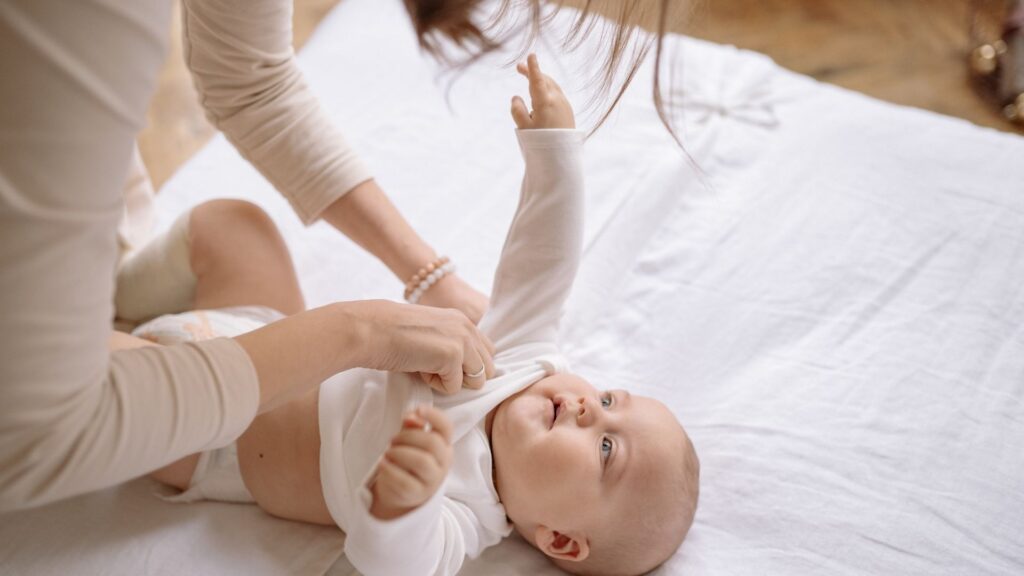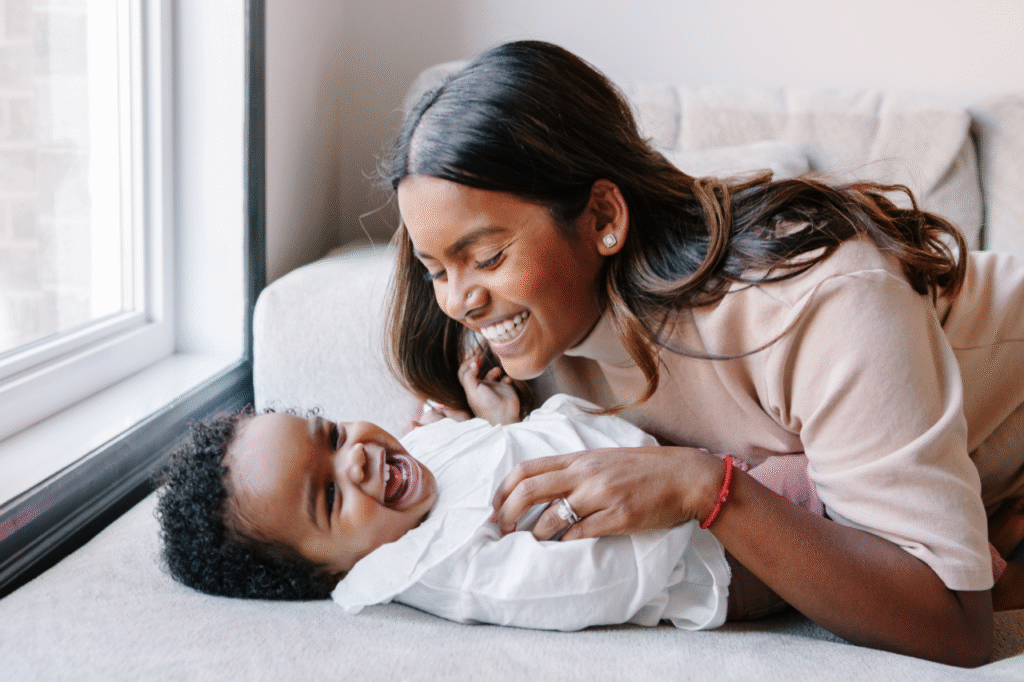How to Dress Baby for Sleep (Safely and Comfortably)

Figuring out how to dress your baby for sleep can feel like a nightly guessing game. Too hot? Too cold? Too many layers? Not enough? As parents, we just want our little ones to be safe, cozy, and content. The good news is: dressing a baby for sleep doesn’t have to be complicated. With a few simple guidelines and a good understanding of seasonal needs, you can create a bedtime setup that feels just right.
Table of Contents
The Golden Rule: One More Layer Than You
A reliable starting point is this: dress your baby in one more layer than you would wear to bed in the same room. For example, if you sleep comfortably in a t-shirt and blanket, your baby might need a footed sleeper and a swaddle or sleep sack.
Newborns can’t regulate their body temperature as well as adults, which makes it important to find that safe middle ground between chilly and overheated.
Understand TOG Ratings (and Why They Matter)
TOG stands for “Thermal Overall Grade.” It’s a standardized way to measure the warmth of baby sleepwear, especially sleep sacks and swaddles. Choosing the right TOG rating based on your nursery temperature helps ensure your baby stays at a safe, comfortable temp overnight.
Here’s a quick guide:
TOG Rating | Room Temperature | What to Wear Underneath |
0.2–0.5 TOG | 74°F and above (24°C+) | Short-sleeve onesie or diaper only |
1.0 TOG | 69–73°F (21–23°C) | Long-sleeve onesie or lightweight footed sleeper |
2.5 TOG | 61–68°F (16–20°C) | Long-sleeve footed sleeper or layered onesie |
3.5 TOG | 60°F and below (15°C or less) | Heavy footed sleeper or layered pajamas |
Tucksy Tip: Always check the sleep sack label. Trusted brands include TOG info right on the tag.
Join Tucksy Today!
Get free emails tailored to your baby’s age and sleep needs, so you never feel alone.
How to Dress Baby for Sleep by Season
Each season brings its own set of challenges. Here’s how to adjust your baby’s sleepwear depending on the weather.
How to Dress Baby for Sleep in Summer
On warm, humid nights, simplicity is key. To avoid overheating, opt for lightweight materials and low TOG sleep sacks. This combination helps ensure a comfortable sleep environment while keeping cool. Remember that proper ventilation can also enhance comfort, so consider sleeping in a well-aired room whenever possible.
- Use a short-sleeve bodysuit or just a diaper under a 0.2–0.5 TOG sleep sack
- Avoid hats or mittens, which trap too much heat
- Use a fan or open window (safely) to circulate air
- Opt for breathable cotton or bamboo fabrics
How to Dress Baby for Sleep in Fall and Spring
Mild seasons call for flexibility. Layer lightly and adjust based on the actual room temperature not the outdoor forecast.
- Try a footed cotton sleeper with a 1.0 TOG sack
- Add or remove a onesie underneath based on whether baby feels too warm or too cold
- Keep room temperature between 68–72°F (20–22°C)

How to Dress Baby for Sleep in Winter
In colder months, warmth matters, but safety comes first. Never use loose blankets in the crib.
- Use a fleece or thicker cotton footed sleeper under a 2.5 or 3.5 TOG sleep sack
- Keep the nursery between 65–70°F (18–21°C)
- Use long sleeves and covered feet
- Swaddled babies should not be overdressed underneath
Signs Baby Is Too Hot or Too Cold
Babies can’t tell us when they’re uncomfortable, so it’s important to read their signals.
Signs your baby may be too hot:
- Sweaty neck or back
- Damp hair
- Flushed cheeks
- Rapid breathing
- Heat rash
Signs your baby may be too cold:
- Cold hands and feet (mild cold is normal)
- Cold chest or back
- Restlessness or frequent waking
Tucksy Tip: The back of your baby’s neck is the best place to check temperature, it’s a better indicator than hands or feet.
Join Tucksy Today!
Get free emails tailored to your baby’s age and sleep needs, so you never feel alone.
Sleep Safety Reminders
When dressing your baby for sleep, safety is always the top priority.
- No loose blankets, quilts, or pillows in the crib
- Avoid thick hats or head coverings while sleeping
- Use fitted sleepwear, not oversized or baggy options
- Swaddling? Stop once baby shows signs of rolling
- Choose breathable, certified fabrics
A good rule: if your baby’s room feels comfortable to you in pyjamas, your baby is probably okay too (with one extra layer).
Conclusion
Dressing your baby for sleep doesn’t have to be overwhelming. By following the room temperature, understanding TOG ratings, and adjusting for the season, you can keep your baby both safe and snuggly at night.
Every baby is a little different, so be flexible and trust your instincts with some guidance from the science.
Frequently Asked Questions
Q: How do I dress my newborn for sleep in hot weather?
Use a lightweight, breathable onesie or just a diaper with a low TOG sleep sack (0.2–0.5). Avoid swaddles that trap heat.
Q: What if my baby feels cold but the room is warm enough?
Check the back of their neck if it’s warm, they’re likely fine. Cold hands or feet aren’t always a sign your baby is cold.
Q: Can babies sleep in fleece pyjamas?
Yes, in colder temperatures and without additional layers underneath. Be cautious of overheating if using fleece plus a sleep sack.
Q: What’s the ideal room temperature for baby’s sleep?
Between 68–72°F (20–22°C). Use a nursery thermometer if you’re unsure.
Q: When can I start using a blanket?
Blankets are not safe for sleep until at least 12 months old. Stick with sleep sacks for warmth.